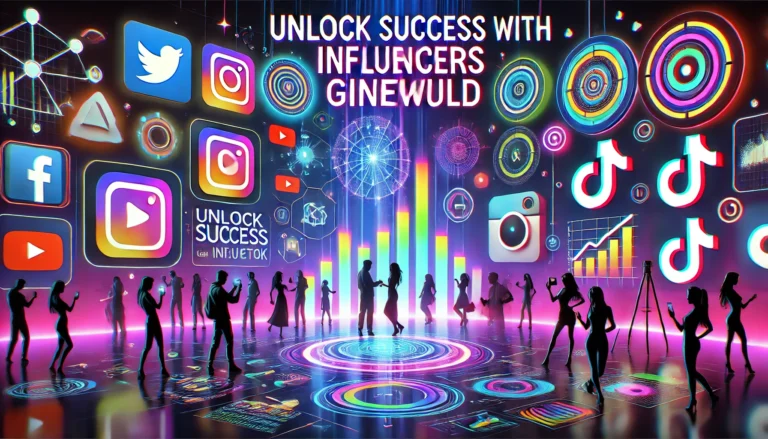How Can Technology Addiction Be Solved?
In today’s hyper-connected world, technology has become an indispensable part of our daily lives. While technology offers countless benefits, such as improving productivity, connecting us with others, and providing endless entertainment, it also has a darker side—addiction.
Technology addiction can negatively impact mental health, productivity, relationships, and overall well-being. Recognizing the issue and finding ways to combat it is essential for leading a balanced and healthy life.
In this comprehensive guide, we’ll explore the causes of technology addiction, its effects, and practical strategies to overcome it.
Understanding Technology Addiction
What Is Technology Addiction?
Technology addiction refers to the compulsive use of digital devices, such as smartphones, computers, gaming consoles, and tablets, to the extent that it interferes with daily life. This behavior often stems from the engaging nature of apps, games, and social media platforms designed to capture and retain users’ attention.
Signs of Technology Addiction
- Excessive Screen Time: Spending hours on devices without realizing how much time has passed.
- Neglecting Responsibilities: Ignoring work, school, or family duties due to device usage.
- Mood Changes: Feeling anxious or irritable when unable to access technology.
- Sleep Disturbance: Staying up late or waking up in the middle of the night to check devices.
- Social Isolation: Preferring virtual interactions over face-to-face communication.
Causes of Technology Addiction
- Dopamine Release: Technology, especially social media and gaming, triggers the release of dopamine, the brain’s reward chemical.
- Instant Gratification: Technology offers immediate rewards, making it hard to resist.
- FOMO (Fear of Missing Out): Social media creates pressure to stay constantly updated.
- Escape Mechanism: People often use technology to avoid stress, loneliness, or boredom.
- Algorithmic Design: Platforms are intentionally designed to keep users engaged.
The Effects of Technology Addiction
Mental Health Issues
Excessive technology use can lead to anxiety, depression, and low self-esteem. The constant comparison on social media, coupled with the lack of physical social interactions, can exacerbate these issues.
Physical Health Problems
- Eye Strain: Prolonged screen time can cause digital eye strain or “computer vision syndrome.”
- Poor Posture: Hunching over devices may lead to back, neck, and shoulder pain.
- Sleep Disruption: Blue light emitted by screens interferes with melatonin production, affecting sleep quality.
Decreased Productivity
Technology addiction often leads to procrastination and distractibility, hindering personal and professional growth.
Strained Relationships
Spending more time on devices than with loved ones can weaken relationships and lead to feelings of neglect.
Steps to Solve Technology Addiction
1. Acknowledge the Problem
The first step to overcoming technology addiction is recognizing that it exists. Reflect on your usage patterns and their impact on your life. Awareness is crucial for initiating change.
2. Set Clear Goals
Define specific, realistic goals for reducing screen time. For example:
- Limit smartphone use to 2 hours daily.
- Avoid screens 1 hour before bedtime.
- Use social media only during designated times.
3. Create a Technology Schedule
Implement structured time slots for using technology. This prevents impulsive usage and encourages discipline.
4. Use Technology to Manage Technology
Ironically, technology can help you manage your addiction:
- Screen Time Apps: Tools like Apple’s Screen Time, Google’s Digital Wellbeing, or apps like Freedom and RescueTime track and limit usage.
- Website Blockers: Extensions like StayFocusd and Cold Turkey block distracting websites.
5. Practice Digital Detox
Periodically disconnect from technology entirely to reset your habits:
- Take a day off from all devices each week.
- Go on a vacation without digital gadgets.
- Spend weekends engaging in offline activities.
6. Reconnect with the Real World
Engage in activities that don’t involve screens:
- Pursue hobbies like painting, gardening, or reading physical books.
- Spend quality time with family and friends.
- Exercise outdoors to boost physical and mental health.
7. Set Boundaries
- Avoid using devices during meals or family gatherings.
- Keep phones out of the bedroom.
- Establish “no-screen zones” in your home.
8. Address Underlying Issues
If you’re using technology to escape stress or loneliness, address these root causes:
- Practice mindfulness and meditation.
- Seek professional help if needed, such as therapy or counseling.
9. Educate Yourself
Understanding the psychological and physiological effects of technology addiction can motivate you to change. Read books, watch documentaries, or attend workshops on digital wellness.
10. Encourage a Supportive Environment
Surround yourself with people who encourage healthy tech habits. Share your goals with family and friends so they can support you.
Long-Term Strategies for Digital Wellness
1. Cultivate Awareness
Regularly reflect on your technology habits and make adjustments as needed. Journaling about your progress can help you stay on track.
2. Embrace Minimalism
Adopt a minimalist approach to technology. Use only the apps and devices essential for your needs, and declutter your digital space.
3. Promote Healthy Use in Children
If you’re a parent, teach your children balanced tech usage:
- Encourage outdoor play and creative activities.
- Limit screen time based on age-appropriate guidelines.
- Model good behavior by reducing your own device usage.
4. Advocate for Responsible Design
Support initiatives that promote ethical technology design. Advocate for features that prioritize user well-being, such as time limits and reduced notifications.
5. Build Resilience
Strengthen your ability to resist temptations through self-discipline and positive habits. For example:
- Replace scrolling with reading a chapter of a book.
- Swap video games for a board game with friends.
6. Seek Professional Help
For severe cases of technology addiction, professional help may be necessary. Therapy options include:
- Cognitive Behavioral Therapy (CBT): Helps identify and change unhealthy thought patterns related to technology use.
- Support Groups: Joining groups for digital detox or addiction recovery can provide a sense of community and shared accountability.
7. Leverage Offline Alternatives
Identify offline alternatives for activities you typically do online. For instance:
- Replace online shopping with visits to local stores.
- Substitute virtual socializing with coffee meetups.
- The shift from digital learning to in-person workshops or classes.
8. Reinforce Positive Behavior
Reward yourself for achieving milestones in reducing technology use. Celebrate small victories, such as a week of reduced screen time, to stay motivated.
The Role of Society in Combating Technology Addiction
Educating Communities
Governments, schools, and organizations should run awareness campaigns highlighting the risks of excessive technology use and promoting digital wellness.
Technology Developers’ Responsibility
Tech companies can play a significant role by:
- Designing apps that encourage mindful usage.
- Implementing features like usage reminders and downtime settings.
- Reducing addictive design elements, such as endless scrolling.
Workplace Policies
Employers can foster a healthier relationship with technology by:
- Encouraging breaks from screens.
- Promoting a culture of work-life balance.
- Providing resources for managing digital overload.
Conclusion
Technology addiction is a growing challenge in our digital era, but it’s not insurmountable. By acknowledging the problem, setting clear boundaries, and embracing healthier habits, you can regain control over your life and use technology as a tool rather than a crutch. Remember, the goal isn’t to eliminate technology but to use it mindfully and purposefully.
Start small, stay consistent, and celebrate your progress. By taking these steps, you can lead a balanced, fulfilling life free from the grip of technology addiction. Together, as individuals and as a society, we can build a healthier relationship with technology and unlock its full potential without becoming enslaved to it.
For More Information, Check out NetWorkForbe





